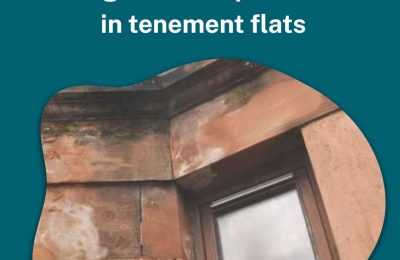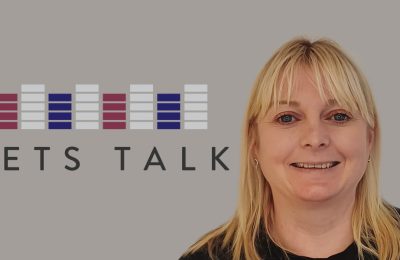When applying for a buy to let mortgage, it can certainly feel like being in a minefield not knowing which way is the safest way to turn. There are enticing mortgage offers out there for landlords, but you’ll need to prepare yourself for strict affordability tests and application processes. While most lenders have their own lending criteria with some stricter than others, what they all have in common is increased anti-money laundering compliance checks and tougher lending restrictions.
Mortgage lenders are regulated by the FCA (Financial Conduct Authority) therefore, do require what seems like an overload of information and paperwork from the applicant. A mortgage application can take on average eight weeks, therefore it is important to stay ahead of the game, particularly if you have to act quickly when securing a property. Here is a useful guide which will help you be prepared.

What documents do I require to apply for a BTL mortgage?
When applying for a mortgage with any mortgage broker or lender, the below documents will be required in order to have an application submitted in the first instance.
1) Identification – Your current signed passport or full UK photocard driving license.
2) Proof of address – Bank statements, council tax bill or utility bill dated within the last three months.
3) Income – For employed applicants – their last three months payslips and most recent P60. For self-employed applicants – they will need to submit their last two years tax calculations and tax overviews. (Lenders will ask for the SA302, SA100 or tax return if retired).
4) Bank statements – All applicants are required to submit their last three months bank statements for all live accounts. For any applicants purchasing through a limited company they will need to submit three months personal and business bank statements.
5) Deposit – Lenders will want to know where your deposit funds have been held over the last three months, therefore they will request bank statements for all accounts that the deposit has been held within, which will include any gifters bank statements and Gift Deposit Letter.
6) Property and rental information – Applicants will need to provide details such as the purchase price, property Home Report, location and expected rental income of the property they are intending to purchase.
7) Additional documents – For Portfolio Landlords, they may be required to provide their property portfolio details, tenancy agreement, rental statements and property schedule.
Generally, most mortgage lenders will require the applicant to have a minimum of a 25% deposit and impose limits on the LTV (loan to value) of 75%, although some lenders are now allowing 15% deposits. Mortgage lenders will also expect a projected rental income which covers a minimum 125% of the landlord’s mortgage payments to pass a mortgage stress test.
If you wish to purchase your first buy to let property, there are important factors to consider. For a second home worth more than £40,000 you need to pay 8% Additional Dwelling Supplement (ADS) in addition to any Land and Buildings Transaction Tax (LBTT) that is due to be paid.
What are the most common barriers a buy to let mortgage applicants can face?
Missing information/documents – Surprisingly, many mortgage applications fail simply because applicants provide inaccurate information within their application or fail to understand why certain documentation has been requested. There are a number of applicants who are reluctant in providing sensitive information to the lenders, however be rest assured that the requested information will always be required and handled appropriately within the Data Protection & FCA regulations. It is always recommended to double check dates and acknowledge all live accounts when providing statements as this can cause unnecessary delays. Without the necessary requested information a mortgage will not be offered.
Income and affordability checks – Each lender will have their own lending criteria, however most lenders have a common applicant’s salary expectation of at least £25,000 per annum. For self-employed applicants, the lenders prefer documents that will show a clear steady income over the last two years. The good news is that some lenders will factor in any strong rental incomes that the property can potentially generate when assessing income within an application.
Poor credit – Mortgage lenders will complete credit checks throughout the application process and poor credit can affect an applicant’s lending ability. However, poor credit does not necessarily mean that an applicant is unable to borrow, and each lender will have their set credit criteria with slightly higher interest rates being applied for applicants with poor credit. It is worth obtaining a credit report and highlighting any discrepancies with your mortgage broker before submitting an application to a lender so you have time to correct any credit issues that are present on the report. Your broker will be able to guide you in improving your credit score and will approach mortgage lenders who specialise in assisting applicants with adverse credit.
Property type – Mortgage lenders will not only assess the condition of the property you intend to purchase, but they will also look at whether the property construction type is standard or non-standard construction and if there is a functional kitchen and bathroom. Lenders are unlikely to lend on a property that is deemed uninhabitable. Other restrictions you can face are flats above commercial properties, multi-unit freehold blocks and short term/holiday lets. It is recommended to fully inspect the property Home Report and discuss any concerns with your solicitor or a mortgage broker before submitting offers on a property.
Age of an applicant – The minimum age of applicants is normally 18, however some lenders do have a minimum age requirement of 25. At the other end of the scale the maximum age for applicants is commonly 75, however if an applicant can provide adequate proof of income, many lenders will assess each case on an individual basis.
Forecast of rental income – As previously mentioned most lenders will also expect a projected rental income which covers a minimum 125% of the landlord’s mortgage payments. If the lender completes their own assessment and estimates a lower rental income then they may decrease how much they let an applicant borrow or simply reject an application. Always ensure that any rental research for the property comes from a robust and reliable source such as Citylets or similar platforms.
Understanding property markets – Any applicant purchasing a buy to let property should always research regional trends and consider the current economic stability. If you submit a mortgage application during a volatile market then there is a risk the surveyor can value the property lower than expected resulting in the lender offering lower funds or rejecting the application entirely. It is recommended to thoroughly research your desired area via the available online platforms and get in touch with local letting agents who are normally happy to assist.
Tax implications – Many buy to let applicants are unaware of the impact of owning a portfolio of properties can have in regards to tax. There are ways to lower your income tax bill as a landlord as there are allowable expenses, however they tend not to be as generous as they used to be. Taxes to consider when buying, are of course LBTT (stamp Duty), Income Tax and Capital Gains Tax. We highly recommend discussing your plans with a Financial Advisor or Tax Specialist to ensure you are fully aware of what is expected of you financially when owning multiple properties.
Borrowing for ‘portfolio landlords’ – If you own four or more properties you are considered a portfolio landlord by lenders. This means that you will have slightly more conditions to comply with. Many mortgage lenders will not lend if the amount of borrowing across the entire portfolio exceeds 75% loan to value and there will be a limit of how many properties you can own within the same postcode. Again the criteria will depend on each mortgage lender, therefore it is important to get in touch with a mortgage broker who specialises in buy to let mortgages.
A good mortgage broker will have no issues in guiding you through the mortgage application process and finding the right mortgage product for you. Many buy to let landlords have a smooth journey when applying for a buy to let mortgage and reap the rewards that this sector can bring. The key is to be organised, have your information and documents ready and build a strong relationship with your mortgage broker.










